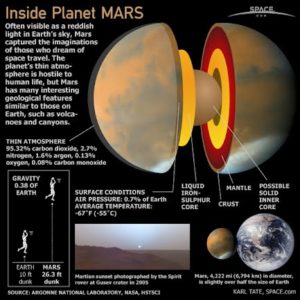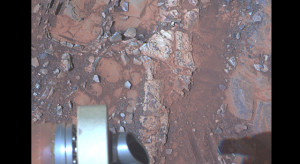By: Nicole Willett

Imagine a shapeless infinite area of subatomic particles. All of the particles slowly started to be attracted to each other. Over millions of years clumps of particles formed and even coalesced into molecules and compounds. After millions more years the compounds formed into small objects, probably pebbles. After a billion years or so there were pockets of material that were separated by millions of light years. These pockets of material were primitive galaxies and they can be 100,000 light years or more across. They were swirling around and inside of these young galaxies, like our Milky Way Galaxy, were primordial solar systems.
 A solar system like ours, started with a swirling cloud of gas and dust. Our solar system is approximately one light year across. As this one light year across solar system was taking shape approximately 5 billion years ago, there were somewhere between 200 and 400 billion other solar systems forming in the Milky Way Galaxy. In the universe it is estimated that the 100 billion (1011) galaxies make up 70 sextillion (70 x 1022 ) stars in the universe. *These numbers are estimates and each publication may have a slightly different number and each year they refine the data.
A solar system like ours, started with a swirling cloud of gas and dust. Our solar system is approximately one light year across. As this one light year across solar system was taking shape approximately 5 billion years ago, there were somewhere between 200 and 400 billion other solar systems forming in the Milky Way Galaxy. In the universe it is estimated that the 100 billion (1011) galaxies make up 70 sextillion (70 x 1022 ) stars in the universe. *These numbers are estimates and each publication may have a slightly different number and each year they refine the data.
 As our home solar system started taking shape, the bulk of the mass went to the center, where the sun was born. As soon as she had enough mass and gravity to force together those first few hydrogen atoms in a process called nuclear fusion, our sun became a star. The sun turned on. Without her we would not exist. Think about that when you look at her every day. Around our Sun were countless particles, molecules, and compounds. As these objects were attracted to each other they became larger and larger. These interactions formed the planets, moons, asteroids, meteors, and comets. The solar system probably had between 50 and 100 planets when it first started taking shape. It was very chaotic and there was no definite order to the solar system at this point. We know that more than likely the orbits we see now of the planets were probably a lot different 4 billion years ago. As the solar system has matured and become a bit more stable, we have the order of the 8 planets that we see now. The order starting at the Sun and moving outward is: Mercury, Venus, Earth, Mars, Jupiter, Saturn, Uranus, and Neptune.
As our home solar system started taking shape, the bulk of the mass went to the center, where the sun was born. As soon as she had enough mass and gravity to force together those first few hydrogen atoms in a process called nuclear fusion, our sun became a star. The sun turned on. Without her we would not exist. Think about that when you look at her every day. Around our Sun were countless particles, molecules, and compounds. As these objects were attracted to each other they became larger and larger. These interactions formed the planets, moons, asteroids, meteors, and comets. The solar system probably had between 50 and 100 planets when it first started taking shape. It was very chaotic and there was no definite order to the solar system at this point. We know that more than likely the orbits we see now of the planets were probably a lot different 4 billion years ago. As the solar system has matured and become a bit more stable, we have the order of the 8 planets that we see now. The order starting at the Sun and moving outward is: Mercury, Venus, Earth, Mars, Jupiter, Saturn, Uranus, and Neptune.
So to map out the universe from largest to smallest the list is as follows:
 The Universe, filaments and groups of galaxies, galaxies, solar systems, planets, you!
The Universe, filaments and groups of galaxies, galaxies, solar systems, planets, you!
So, why are you reading this on an educational blog about Mars? The reason is simple. Our star, the sun, has a finite life. We must understand our place in the universe in order to appreciate the importance of why we should send humans to Mars. Mars is our neighbor, with many similarities to Earth. We must learn to inhabit other  worlds if we are going to sustain humanity. We are life, we have the ability to preserve ourselves and venture out into our solar system and then to other solar systems. We have discovered thousands of other planets in a very short time. Our neighboring star system has planets. It would behoove us to learn how to go there. But first we must take steps, the first giant leap was a man on the Moon, the next enormous leap will be humans on Mars, and the next colossal leap will be humans to Alpha Centauri and beyond.
worlds if we are going to sustain humanity. We are life, we have the ability to preserve ourselves and venture out into our solar system and then to other solar systems. We have discovered thousands of other planets in a very short time. Our neighboring star system has planets. It would behoove us to learn how to go there. But first we must take steps, the first giant leap was a man on the Moon, the next enormous leap will be humans on Mars, and the next colossal leap will be humans to Alpha Centauri and beyond.
~Humans to Mars as a bridge to the stars.
[Images: teachastronomy, bailescu, static, fanpop]














